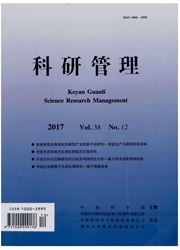

 中文摘要:
中文摘要:
我国高校校办产业作为世界高等教育史上的独特现象,一直得到政府、社会和学术界的广泛关注。文章基于随机前沿方法(简称SFA),利用2007年我国教育部直属高校校办产业相关数据,实证分析了其成本一效益问题,旨在通过严格实证分析探索我国校办产业运营效率的近况及主要的内外部影响因素。研究结果表明,校办产业的成本费用与其销售收入呈倒U型关系,与其利润总额和上交税金呈负向关系;影响校办产业成本一效益效率的主要因素有:高级职称人员比例、所在省区GDP值,所属高校的综合排名以及所拥有的上市公司数目。文章还详细分析了各高校校办产业成本一效益效率值的大小,并提出了相应的政策建议。
 英文摘要:
英文摘要:
University enterprise in China as a unique phenomenon in the history of world higher education has got wide attention from governments, society and academia. Using the Stochastic Frontier Approach (SFA) and based on the related data of the enterprises of universities directly affiliated the ministry of education in 2007, this paper empirically studied the cost-benefit issue. The aim was to explore the recent situation of operation efficiency of university enterprises in China and the main internal and external influencing factors through the strict empirical analysis. The results suggested that: the cost of university enterprises has an inverted U-shaped relationship with their sales income and negative relationships with their total profit and tax delivery. The main factors influencing the cost-benefit efficiency of university enterprises are the percent- ages of senior title personnel, GDP values of provinces, the integrated rankings of universities and the numbers of public companies they have. Finally, the paper analyzed the cost-benefit efficiency of every university enterprises in detail and put forward relevant policy suggestions.
 同期刊论文项目
同期刊论文项目
 同项目期刊论文
同项目期刊论文
 Managerial ties and firm performance in an emerging economy: Tests of the mediating and moderating e
Managerial ties and firm performance in an emerging economy: Tests of the mediating and moderating e 期刊信息
期刊信息
